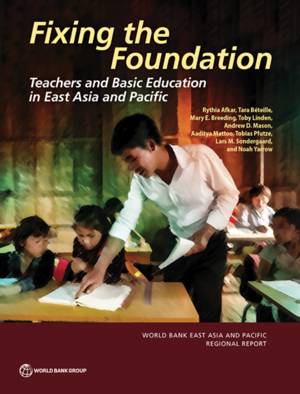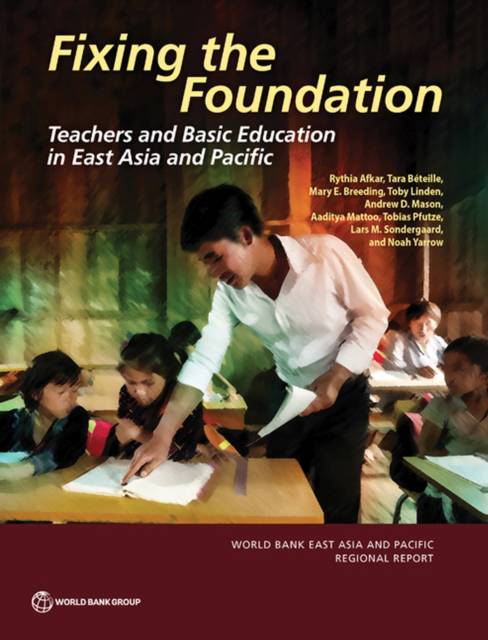
- Afhalen na 1 uur in een winkel met voorraad
- Gratis thuislevering in België vanaf € 30
- Ruim aanbod met 7 miljoen producten
- Afhalen na 1 uur in een winkel met voorraad
- Gratis thuislevering in België vanaf € 30
- Ruim aanbod met 7 miljoen producten
Zoeken
Fixing the Foundation
Teachers and Basic Education in East Asia and Pacific
Rythia Afkar, Tara Beteille, Mary Breeding, Toby Linden, Andrew Mason, Aaditya Mattoo, Tobias Pfutze, Lars Sondergaard, Noah Yarrow
€ 65,45
+ 130 punten
Omschrijving
Countries in middle-income East Asia and the Pacific were already experiencing serious learning deficits prior to the COVID-19 pandemic. COVID-related school disruptions have only made things worse. Learning poverty -- defined as the percentage of 10-year-olds who cannot read and understand an age-appropriate text -- is as high as 90 percent in several countries. Several large Southeast Asian countries consistently perform well below expectations on adolescent learning assessments. This report examines key factors affecting student learning in the region, with emphasis on the central role of teachers and teaching quality. It also analyzes the role education technologies, which came into widespread use during the pandemic, and examines the political economy of education reform. The report presents recommendations on how countries can strengthen teaching to improve learning and, in doing so, can enhance productivity, growth, and future development in the region.
Specificaties
Betrokkenen
- Auteur(s):
- Uitgeverij:
Inhoud
- Aantal bladzijden:
- 158
- Taal:
- Engels
- Reeks:
Eigenschappen
- Productcode (EAN):
- 9781464819049
- Verschijningsdatum:
- 27/12/2023
- Uitvoering:
- Paperback
- Formaat:
- Trade paperback (VS)
- Afmetingen:
- 203 mm x 267 mm
- Gewicht:
- 471 g

Alleen bij Standaard Boekhandel
+ 130 punten op je klantenkaart van Standaard Boekhandel
Beoordelingen
We publiceren alleen reviews die voldoen aan de voorwaarden voor reviews. Bekijk onze voorwaarden voor reviews.








